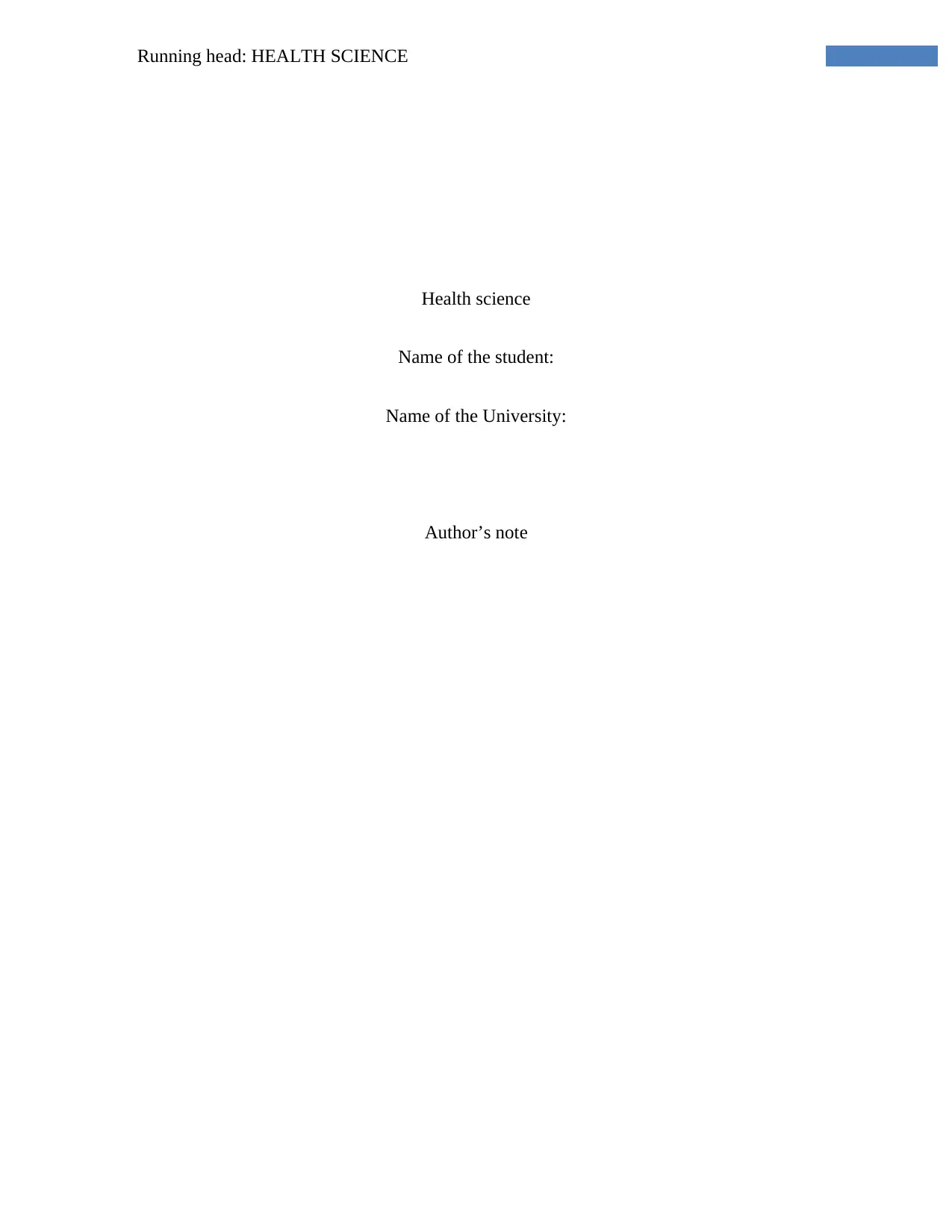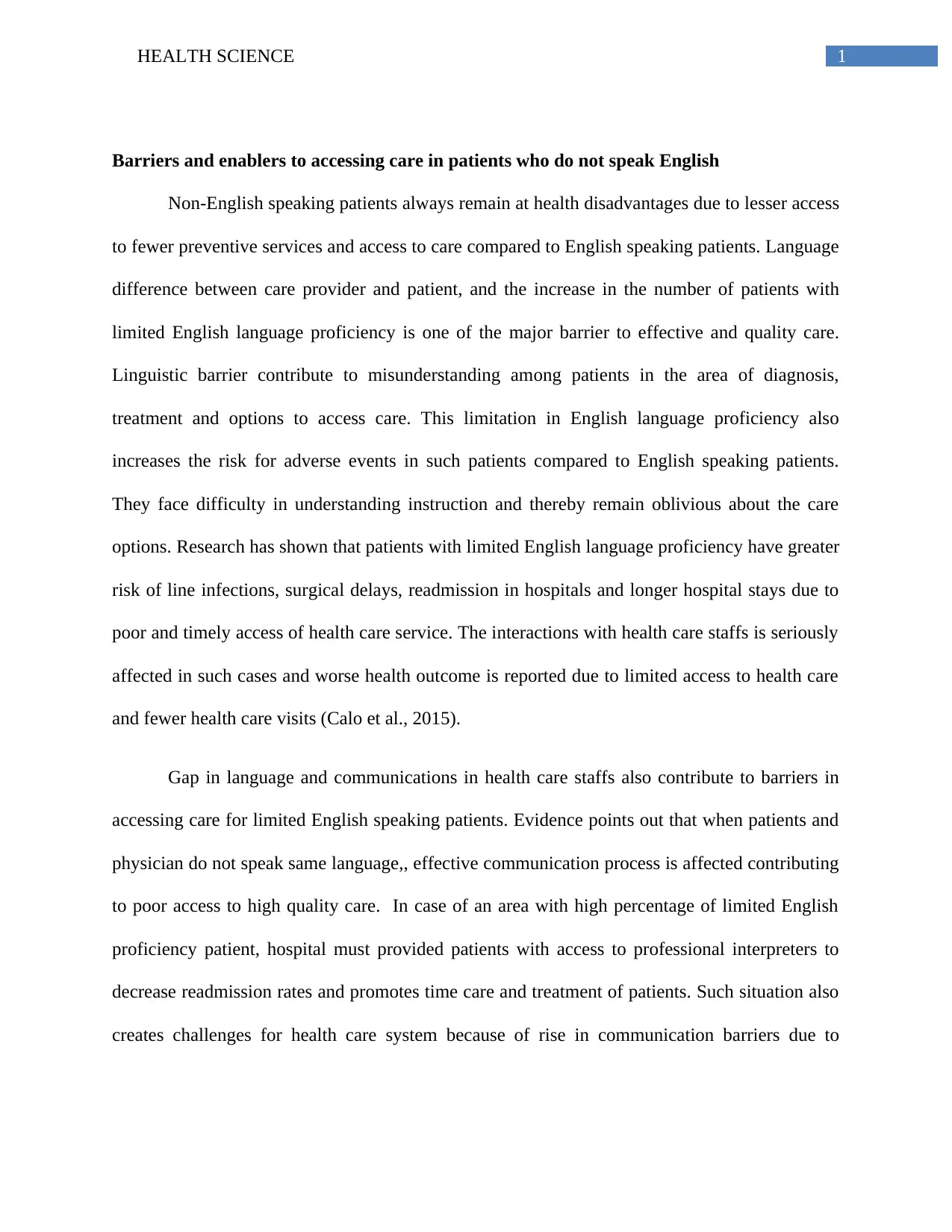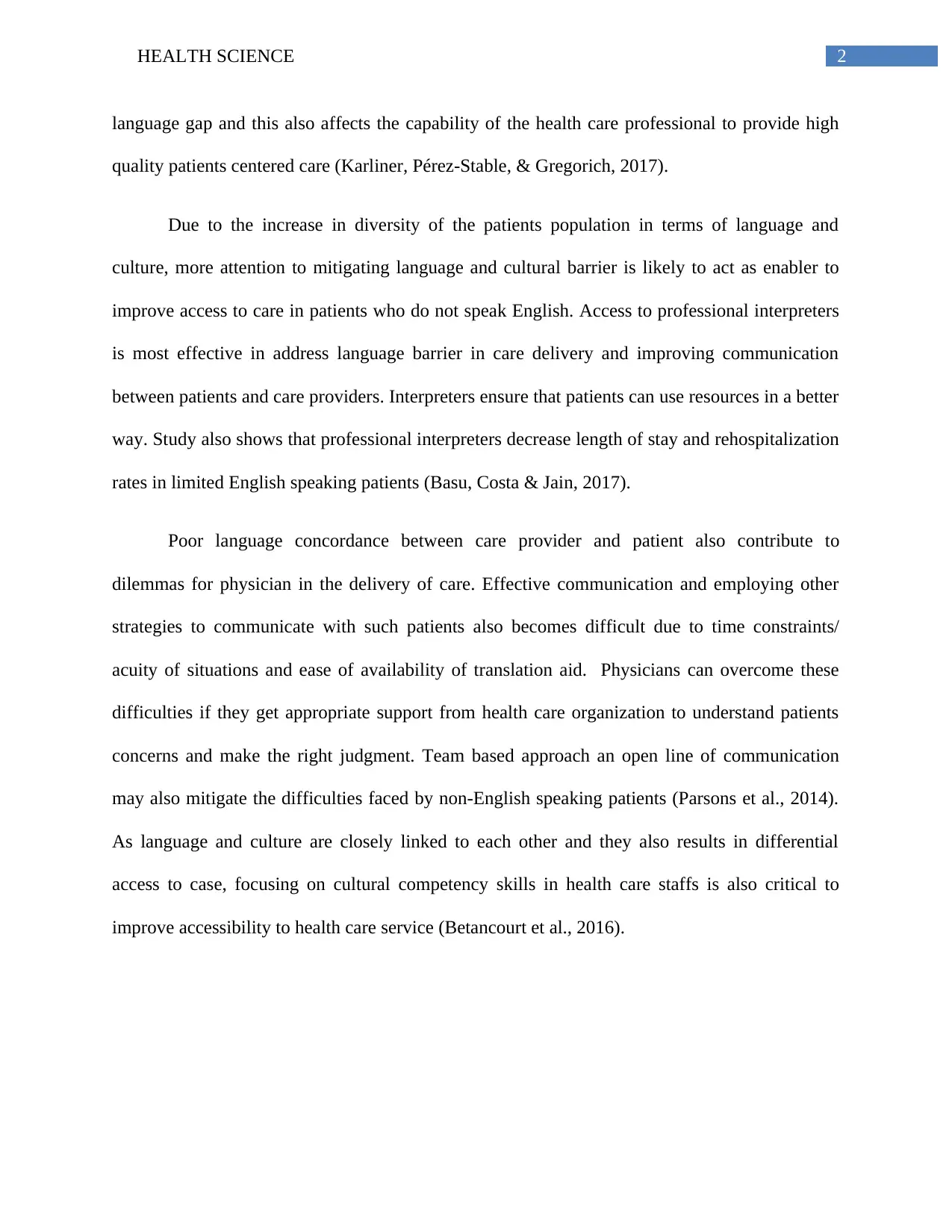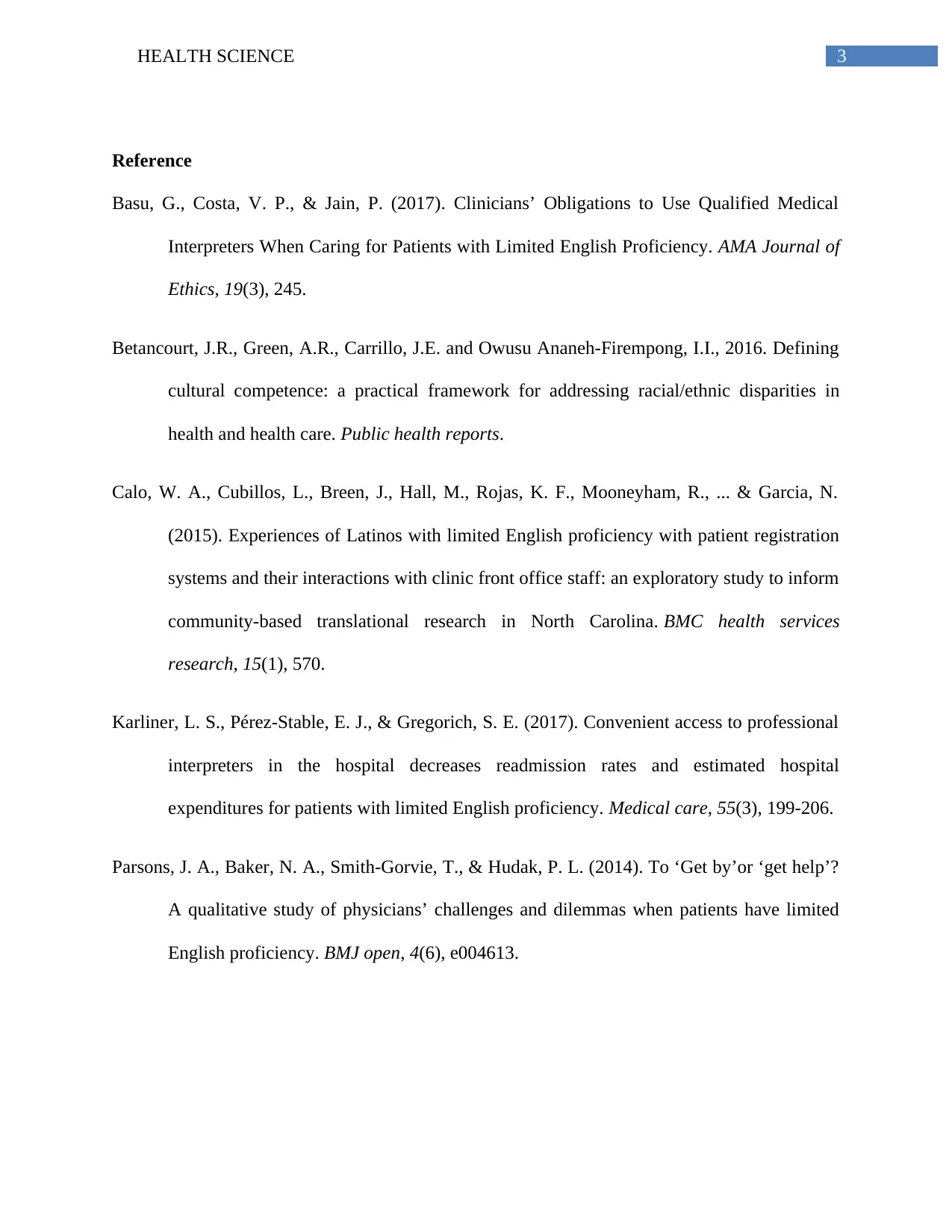Health Science Report: Barriers in Healthcare for Non-English Speakers
VerifiedAdded on 2020/05/11
|4
|896
|274
Report
AI Summary
This report analyzes the barriers and enablers to accessing healthcare for non-English speaking patients. It highlights that language differences between healthcare providers and patients significantly impact the quality of care, leading to disparities in preventive services and overall health outcomes. The report emphasizes that linguistic barriers contribute to misunderstandings regarding diagnosis, treatment options, and access to care, increasing the risk of adverse events such as infections, surgical delays, and longer hospital stays. The report also examines the importance of professional interpreters in mitigating these challenges and improving communication between patients and healthcare providers. The report suggests that hospital must provided patients with access to professional interpreters to decrease readmission rates and promotes time care and treatment of patients. Furthermore, the report highlights the need for cultural competency among healthcare staff to improve accessibility and patient-centered care. References are included to support the findings.
1 out of 4











![[object Object]](/_next/static/media/star-bottom.7253800d.svg)